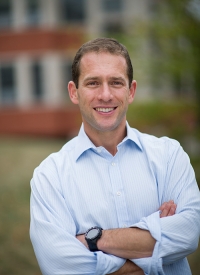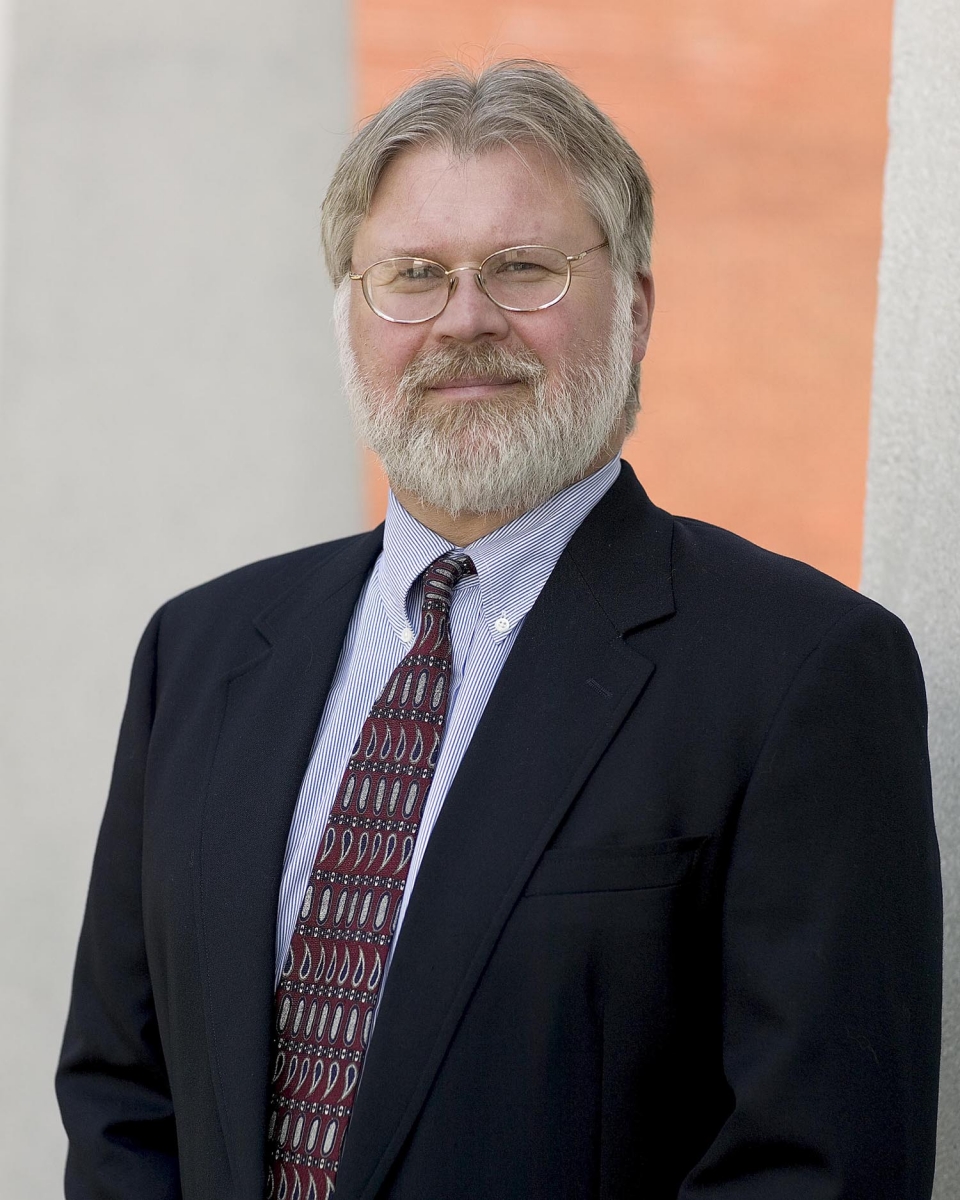President Donald Trump delivered his delayed State of the Union address on Feb. 5, touching upon issues related to partisan divides, reproductive rights, health care, infrastructure, immigration, and national security.
We discussed his speech with experts from Princeton University’s Woodrow Wilson School of Public and International Affairs, who shared their reactions below.
Q. On the topic of health care, President Trump brought up lower prescription drug prices, more funding for childhood cancer research and doing more about HIV/AIDs. What’s your take on this?
 so starved for funds, they would most likely have been doing this already. One caveat is that a lot of the places that are most impacted on a per capita basis are smaller rural areas that may not receive new funding under this initiative totarget the top 48 counties in terms of numbers of cases. These rural hot spots need help too.
so starved for funds, they would most likely have been doing this already. One caveat is that a lot of the places that are most impacted on a per capita basis are smaller rural areas that may not receive new funding under this initiative totarget the top 48 counties in terms of numbers of cases. These rural hot spots need help too.
Regarding funds for childhood cancer, it is hard to argue against putting more money into research on childhood cancers. The issue will be whether these new funds come at the expense of other research priorities at the National Institutes of Health or whether they will actually represent new monies.
With regards to pharmaceutical pricing, this is an incredibly complex issue with many parties (drug companies, insurers, pharmacies, and pharmacy benefit managers) involved. Greater price transparency is an excellent place to start trying to fix this market, but it may not be enough without actual, old fashioned anti-trust action in some cases.”
– Janet Currie, Henry Putnam Professor of Economics and Public Affairs

“It’s always good to see health care highlighted in the State of the Union. While the focus on eradicating HIV is welcome, it is too early to tell what concrete steps the administration will be willing to take to address disease transmission and how much funding the budget will commit to the endeavor.
On prescription drugs, it is important to put the President’s assertion that drug prices had their lowest increases in context. The decline in drug pricing can also be due to new competition for some very expensive drugs, including medication to treat hepatitis C. And, prices have been rising so fast in recent years that a smaller increase means very little for patients who are continuing to struggle with costs. The administration’s proposal to address costs and change some of the inflationary incentives built into the current structures may be a rare opportunity for bipartisan policy making in a very rancorous time.
Similarly, the president’s mention of protecting people with pre-existing conditions is recognition of how potent the issue has become. It will be helpful to see the details, if any, of what that will entail. So far, the administration’s legal posture in the Texas v. Azar case, which threatens to upend not just those protections but the entire Affordable Care Act, has not been consistent with that goal.”
–– Heather Howard, Lecturer in Public Affairs and Director, State Health and Values Strategies
Q. President Trump said we “liberated virtually all of Iraq and Syria” from ISIS control. Is this true, and is now the right time to bring soldiers home from Syria? And is now the right time to pull out of Afghanistan?
“ISIS has been driven back in Iraq and Syria to a tiny territory and its influence vastly diminished by the combined efforts of American, Iraqi, and Kurdish forces as well as some other Syrian rebel groups. That’s a necessary first step, but we should not forget that we have

seen this movie before. Between 2006 and 2008 American forces and their Iraqi allies decimated the group’s direct predecessor, Al Qaeda in Iraq. But after that defeat, the group survived as a clandestine terrorist organization until it had the opportunity to re-emerge as the civil war in Syria heated up in 2012 to 2014. Why? Because the Iraqi government did not solve the fundamental political issues between the Sunni minority and Iraqi government. By focusing so much on the military side of the conflict, we risk making the same mistake again.”
Now is not the right time to begin reducing forces in Afghanistan. That time may come soon; a number of geo-political trends are coming together to open up possibilities for political compromise that were not there until recently. But forces should be withdrawn as talks advance, not before there is a clear trajectory to a political settlement that will not lead into another Afghan civil war. The president’s speech expressed appropriate conditionality about a withdrawal. Hopefully he will follow that with a full-throated commitment to the Afghan government and to the requirement that the Taliban and opposition parties engage with it inside the bounds of the Afghan constitution.”
– Jacob N. Shapiro, Professor of Politics and International Affairs
“Trump is essentially following the Obama policy in Syria: treat ISIS as a purely military problem with a military solution. ISIS is a symptom of a far greater problem, not the cause. When I was Ambassador to Iraq between 2007 and 2009, one of the targets of the surge was al-Qaida in Iraq (AQI), the predecessor of ISIS. Even with 180,000 troops, we could not eliminate them. There were pockets in Mosul and the Euphrates River Valley. Why? Because significant elements of Iraq’s Sunni Arab population viewed AQI as less of a threat than the Shia-dominated government in Baghdad. AQI went underground; it did not disappear. That is what ISIS is doing now, probably with greater ease because there is no long-term hold force to root out ISIS sleepers and prevent a regeneration. Even if our forces remain, they are insufficient to undertake a counter insurgency mission. Should our Kurdish allies remain in traditionally Arab areas, they will be viewed as an alien force and make the problem worse.
So, ISIS will be back. As was the case in Iraq, they will never really leave.

What are our options? One that our military was pursuing, relocating Counter Terrorist Special Forces to bases on the Iraqi side of the border, has been foreclosed by the president himself: by publicly stating that is our intention and that their mission will be to monitor Iran, he placed the Iraqi government in an impossible position; they cannot be seen as allowing their territory to be used for that purpose. In my experience, there is no situation in the Middle East so bad that it cannot be made worse. Obama made it bad; Trump is making it worse.
The same is true in Afghanistan. By accepting the long-standing Taliban condition of refusing to negotiate with the Afghan government on the grounds that they are a U.S. puppet, we have delegitimized that government. We are already seeing some consequences: The Russians are now hosting talks between Afghan opposition figures and the Taliban, again without the government present. And the Taliban have stepped up their attacks on Afghan forces with the aim of breaking the will of a demoralized army. Despite horrific losses, that will has remained strong, until now. If that will breaks, the Taliban should be grateful — they couldn’t have done it without us.
Dropping our long-standing demand that the Afghan government be involved in any discussions with the Taliban means only: We are surrendering. Only the terms remain to be worked out. But in dropping that condition, we have set the stage for a new Afghan civil war.
This is bleak, I know. But during almost 40 years in the Middle East, my major analytical mistakes have been the result of not being dark enough.
– Ryan Crocker, Visiting Lecturer and Diplomat-in-Residence
Q. Both this year and last, President Trump made mention of our “crumbling infrastructure.” Have we seen any headway in this area?

“The American Society for Civil Engineers has rated America’s infrastructure as D+ (and, as a professor of mine once said — a D+ is not a grade, it is sarcasm) noting it is in ‘poor to fair condition and mostly below standard, with many elements approaching the end of their service life,’ exhibiting ‘significant deterioration…with strong risk of failure.’ Infrastructure should clearly be a bipartisan priority.
In last year’s State of the Union, to address our failing infrastructure, Trump made some vague promises about a $1.5 trillion infrastructure package combined with some even vaguer promises of regulatory reform. In 2018, the Trump administration (despite controlling the legislative and executive branches) made no progress on infrastructure and, worse, made no real effort. In this year’s State of the Union, the promises on infrastructure were even vaguer, and personally my expectations are even lower.”
– Steven Strauss, John L. Weinberg/Goldman Sachs & Co. Visiting Professor
Q. President Trump advocated for nationwide family leave and the prohibition of late-term abortion. What are the implications of this?
“I noticed a glaring inconsistency in President Trump’s remarks about women in the State of the Union. On the one hand, the president celebrated the accomplishments of women in the workplace and in the political arena, noting the proportion of women in the paid labor force is at an all-time high, that 58 percent of new jobs in the last year were filled by women, and that more women are serving in the 116th Congress than ever before. (Though it’s worth noting that women’s representation in Congress — about 24 percent — is still well below their proportion in the general population.) He also announced his support for paid family leave, a policy initiative that liberals have long advocated for. Guaranteeing paid leave for family care work would not only represent a major advance for  family caretakers (the vast majority of whom are women), it would also bring the United States into alignment with the rest of the world. In every other advanced economy and in many developing ones, paid family leave has long been a fact of life. Americans deserve this basic guarantee.
family caretakers (the vast majority of whom are women), it would also bring the United States into alignment with the rest of the world. In every other advanced economy and in many developing ones, paid family leave has long been a fact of life. Americans deserve this basic guarantee.
It was ironic then that the president also used the State of the Union to pose a threat to the legal status of abortion. In fact, the ability to control their reproductive destiny, to determine whether to become a mother, when to have children, and how many, has been absolutely central to the achievements of women over the last century. Safe, legal abortion, along with access to contraception and health care, is as integral to women’s full citizenhood as women’s suffrage. The vision presented by the rows and rows of women in the Democratic caucus wearing white in honor of the suffragists and their accomplishment 100 years ago in securing women’s right to vote was a powerful reminder that gender equality requires women’s full participation in civic life.”
–Elizabeth Armstrong, Associate Professor of Sociology and Public Affairs
Q. Is this “onslaught” of Mexicans really a threat to the safety, security, and financial well‑being of all Americans, as President Trump said? What are your reactions to his immigration plans?
“President Trump’s desire for a border wall, reiterated in his speech, rests on a mountain of falsehoods, beginning with his claim that we must ‘protect our very dangerous southern border’ from a ‘tremendous onslaught.’ Net unauthorized migration from Mexico ended more than a decade ago, and each year more undocumented Mexicans leave the United States than enter it. As a result, the estimated number of unauthorized Mexicans living in the United States dropped from 6.95 million persons in 2007 to 5.45 million in 2016, the latest year for which estimates are available. This decline is reflected in the number of apprehensions along the border, which in 2017 dropped to its lowest level since 1970. In that year, the border patrol had fewer than 1,600 officers compared to more than 19,000 today. If we divide the number of apprehensions by the number of officers, the rate of apprehensions is the smallest it’s been since 1943.
Trump also stated the border is a ‘lawless threat’ and subject to ‘little border protection.’ In reality, crime rates on the U.S. side of the border are very low and the Mexico-U.S. border is the most heavily patrolled border anywhere in the world, with the possible exception of  the Korean DMZ. One third of the border is already walled or fenced. From 1986 to 2016, the border patrol grew from 3,700 to 19,800 officers, and its budget rose from $330 million to $3.6 billion in constant 2016 dollars. Since 1986, a total of $62 billion dollars has been allocated to border enforcement. North of the border the budget for Immigrant and Customs Enforcement in 2016 stood at around $6.2 billion, an increase of 271 percent since the agency’s founding in 2003. Over the same period, the size of the immigrant detention system has doubled.
the Korean DMZ. One third of the border is already walled or fenced. From 1986 to 2016, the border patrol grew from 3,700 to 19,800 officers, and its budget rose from $330 million to $3.6 billion in constant 2016 dollars. Since 1986, a total of $62 billion dollars has been allocated to border enforcement. North of the border the budget for Immigrant and Customs Enforcement in 2016 stood at around $6.2 billion, an increase of 271 percent since the agency’s founding in 2003. Over the same period, the size of the immigrant detention system has doubled.
It’s not that no one is arriving at the border, of course. Although Mexicans have largely disappeared, they have been replaced by Central Americans who now comprise a majority of those apprehended. Nonetheless, the number of Central Americans arriving annually at the nation’s southern border is insufficient to offset the net loss of Mexicans, so the total size of the undocumented population has fallen from an estimated 12.2 million persons in 2007 to 10.7 million in 2016. At this point, however, the majority of new undocumented migrants enter not by crossing the border, but by overstaying visas. But even these new entrants are not enough to counter the disappearance of Mexicans, and the size of the undocumented population continues to fall year by year.
Historically, the vast majority of unauthorized border crossers were Mexican male workers commuting to jobs in the United States. In contrast, today the large majority are Central Americans arriving in family groups to seek refuge, not work. Whereas Mexicans accounted for 98 percent of all border apprehensions in 2000, by 2017 they comprised only 42 percent of the total. Although statistics on the arrival of families and children go back only to 2013, we know that between that date and 2018, the number of persons apprehended in the company of family members grew from 15,000 to 102,000 and the number of unaccompanied minors grew from 39,000 to 50,000.
The situation at the border today is not an immigration crisis, but a humanitarian crisis. What 20 years ago was a very large flow of Mexican workers has become a much smaller stream of Central American families and children. Instead of treating these new arrivals as victims and processing them as refugees or asylum seekers, Trump demonizes as ‘ruthless coyotes, cartels, drug dealers, and human traffickers’ who constitute ‘a threat to the safety, security, and financial wellbeing of all Americans.’ The truth is that immigrants — including those present without authorization — display lower crime rates than U.S. natives, have tiny effects native wages and employment rates, and with the exception of education and emergency health services, they make limited use of entitlements.
The real purpose of Trump’s proposed border wall cannot be to prevent undocumented migrants from entering the United States or to protect U.S. citizens. The net inflow is negative and has been for many years; more unauthorized migrants enter as visa overstayers than clandestine border crossers; and immigrants constitute no credible threat to native born Americans. Instead, the purpose of the wall is symbolic. It offers a concrete signal to his political base that those living south of it are unwelcome as immigrants and unacceptable as Americans. Rather than arising from ‘love and devotion,’ as the President stated in his speech, his ardor for his ‘big, beautiful wall’ along the border stems from sentiments of hatred and repulsion. It is a concrete monument to white nationalism, not a protective barrier.”
– Douglas Massey, Henry G. Bryant Professor of Sociology and Public Affairs
“President Trump made overtures for bipartisan cooperation on several important policy issues, but not immigration. He was correct in characterizing immigration as a moral issue, but not because of wanton lawlessness at the southern border.
 Leaving aside the president’s signature hyperbole and factual distortion about the urgent need for a physical barrier to curb unauthorized entry, the speech was notable for its silence about the most pressing immigration policy issues, including the humanitarian crisis at the U.S.-Mexico border as asylum requests trickle through the overburdened courts, the liminal status of over 700,000 youth registered under the Deferred Action for Childhood Arrivals (DACA), and the administration’s draconian enforcement tactics that involved separation of thousands of children from their parents. Yes, these are not only policy issues but also moral issues.
Leaving aside the president’s signature hyperbole and factual distortion about the urgent need for a physical barrier to curb unauthorized entry, the speech was notable for its silence about the most pressing immigration policy issues, including the humanitarian crisis at the U.S.-Mexico border as asylum requests trickle through the overburdened courts, the liminal status of over 700,000 youth registered under the Deferred Action for Childhood Arrivals (DACA), and the administration’s draconian enforcement tactics that involved separation of thousands of children from their parents. Yes, these are not only policy issues but also moral issues.Even as he acknowledged that legal immigrants ‘enrich the nation,’ and claimed to want to admit ‘the largest numbers ever,’ the president conveniently ignored his decision to cap refugee admissions at 45,000 — one of the lowest ceilings since 1986. This is a moral issue. Also omitted from the address is the decision to cancel temporary protected status for more than 300,000 people from countries such as Haiti, Sudan, El Salvador, Nepal, and Honduras, for whom return would imperil their lives. This, too, is a moral issue, but one not mentioned by a president intent on criminalizing immigrants and undercutting the legal auspices of their presence in the United States when legal protections are in place. Not only would deportation of these migrants that abided by U.S. laws prove costly to U.S. taxpayers, but it would also incur massive social and psychological costs associated with family separation and disruption of thriving ethnic communities.
Another inconvenient truth with profound moral undertones, also ignored by the speech writers, is the Trump administration’s heartless policy of separating children from their parents. How is it possible that there is still no reliable estimate of the number of children involved, of the number successfully reunited, and of the human consequences of this inhumane violation of human rights? Mentioning mothers and children only in the context of sexual exploitation and trafficking while ignoring the policy-inflicted harm to thousands of unwitting families seeking protection is not only disingenuous, but also immoral.”
– Marta Tienda, Maurice P. During Professor in Demographic Studies and professor of sociology and public affairs
Q. In his address, President Trump brought up the notion of partisan divides. What do you make of this theme?
“President Trump is a divider, he is a fierce partisan, and he has repeatedly said things that are not true. He consistently plays to the nation's fears, not its hopes. During Tuesday night's speech, he quickly abandoned an opening theme of unity to issue a dire warning over a "caravan" of immigrants surging to America's southern border — a manufactured crisis that has stoked nativist sentiment and been the centerpiece of his drive for a multi-billion-dollar wall.
To give any weight to those portions of the speech that included messages of unity is to be blind to the clear patterns that we have seen from this White House every day. There is almost no evidence to support the possibility of true bipartisanship or his putting aside the politics of anger.
The president's address must be seen as political theater put on by a commander-in-chief who faces historically low approval ratings and who is trying to restore a modicum of strength after his party was battered in the midterms and soundly defeated in the recent battle over the budget.
Trump wanted to present an image that is at odds with who he is, but convenient for the moment. Most Democrats, after two years of brutal partisan attacks and disinformation, cannot trust this president in any kind of serious alliance.”
– Julian E. Zelizer, Malcolm Stevenson Forbes, Class of 1941 Professor of History and Public Affairs
This text also appears on CNN.com.

